Filter resources by type or complexity
All AdvancedArticleBeginnerIntermediateReportResearch PaperVideo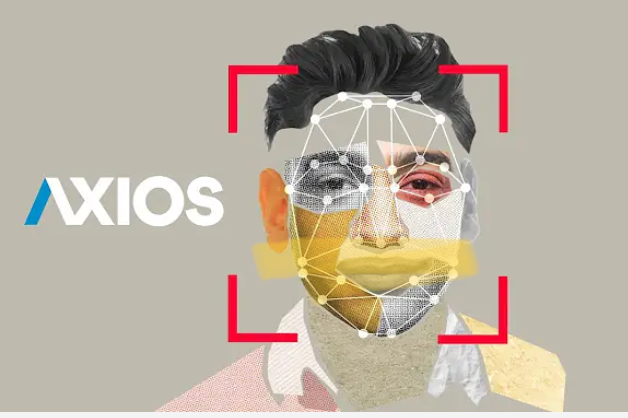
Biases are being baked into artificial intelligence
When it comes to decision making, it might seem that computers are less biased than humans. But algorithms can be just as biased as the people who create the… Quick, concise Axios video that describes algorithmic bias, how and why human bias ends up in systems used for hiring and criminal justice among other things.
Read More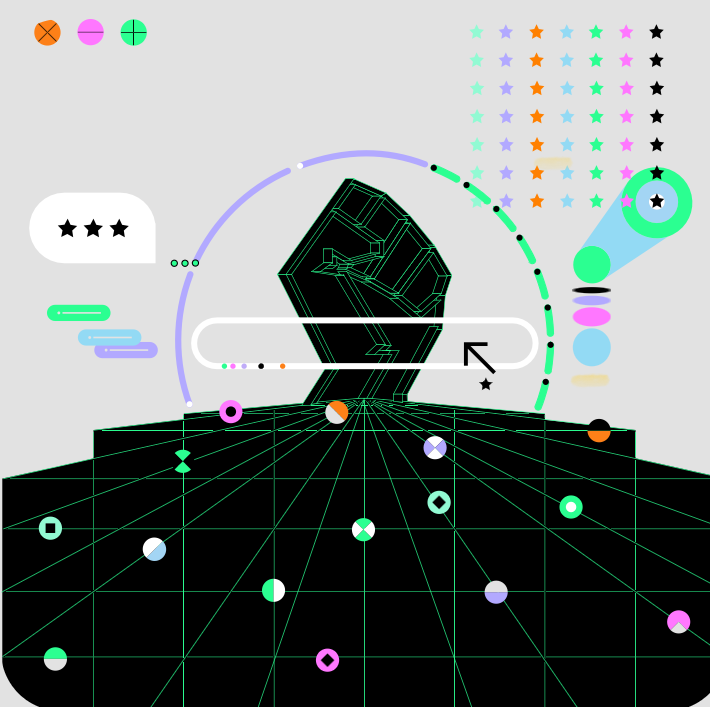
Racial Justice: Decode the Default (2020 Internet Health Report)
Technology has never been colourblind. It’s time to abolish notions of “universal” users of software. This is an overview on racial justice in tech and in AI that considers how systemic change must happen for technology to be support equity.
Read MoreMeasuring racial discrimination in algorithms
Measuring racial discrimination in algorithms There is growing concern that the rise of algorithmic decision-making can lead to discrimination against legally protected groups, but measuring such algorithmic discrimination is often hampered by a fundamental selection challenge. We develop new quasi-experimental tools to overcome this challenge and measure algorithmic discrimination in the setting of pre-trial bail […]
Read More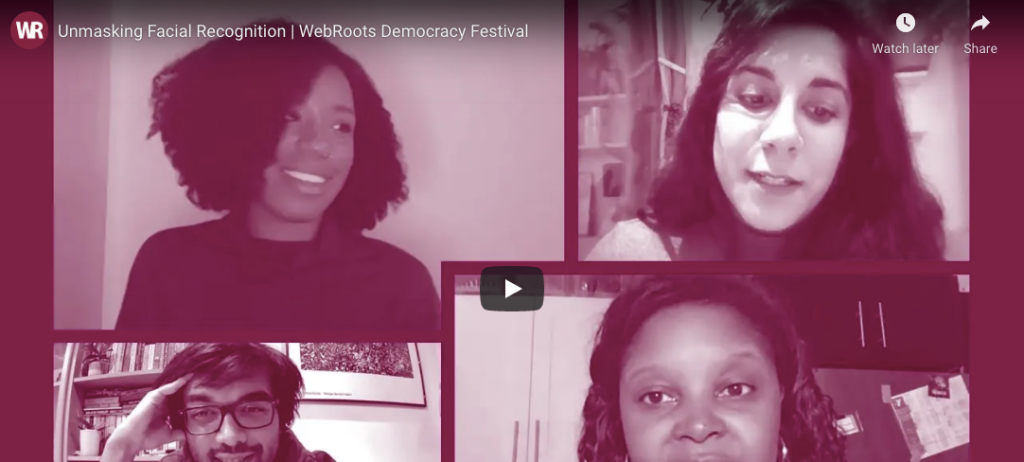
Unmasking Facial Recognition | WebRoots Democracy Festival
This video is an in depth panel discussion of the issues uncovered in the ‘Unmasking Facial Recognition’ report from WebRootsDemocracy. This report found that facial recognition technology use is likely to exacerbate racist outcomes in policing and revealed that London’s Metropolitan Police failed to carry out an Equality Impact Assessment before trialling the technology at […]
Read More
Can make-up be an anti-surveillance tool?
As protests against police brutality and in support of the Black Lives Matter movement continue in the wake of George Floyd’s killing, protection against mass surveillance has become top of mind. This article explains how make-up can be used both as a way to evade facial recognition systems, but also as an art form.
Read More
Machine Bias – There’s software used across the country to predict future criminals and it’s biased against blacks
There’s software used across the country to predict future criminals. And it’s biased against blacks. This is an article detailing a software which is used to predict the likelihood of recurring criminality. It uses case studies to demonstrate the racial bias prevalent in the software used to predict the ‘risk’ of further crimes. Even for […]
Read More
Another arrest, and jail time, due to a bad facial recognition match
A New Jersey man was accused of shoplifting and trying to hit an officer with a car. He is the third known black man to be wrongfully arrested based on face recognition.
Read More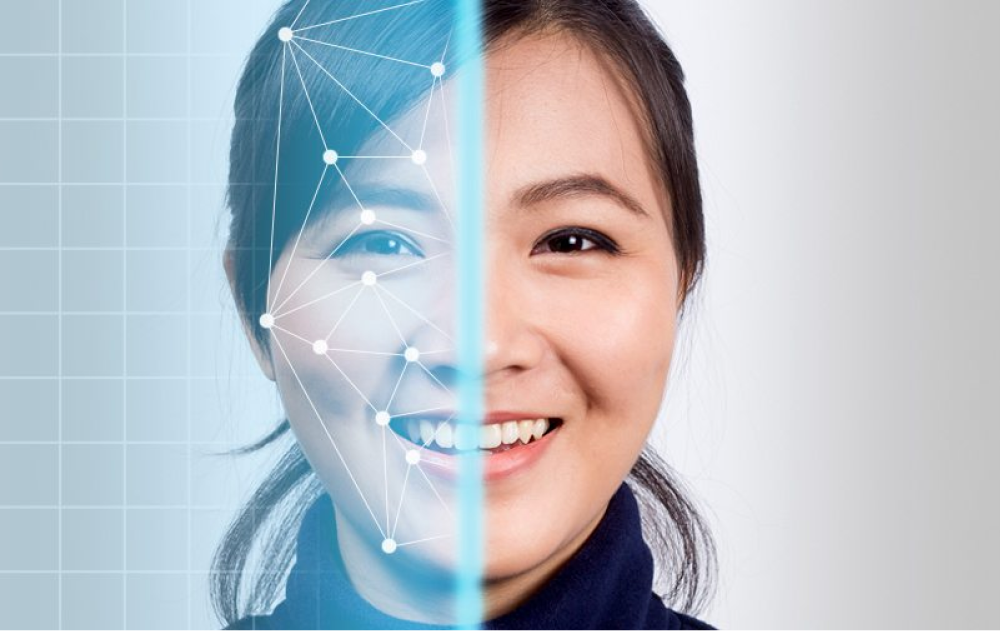
AI in immigration can lead to ‘serious human right breaches’
This video refers to a report from the University of Toronto’s Citizen Lab that raises concerns that the handling of private data by AI for immigration purposes could breach human rights. As AI tools are trained using datasets, before implementing those tools that target marginalized populations, we need to answer questions such as: Where does […]
Read More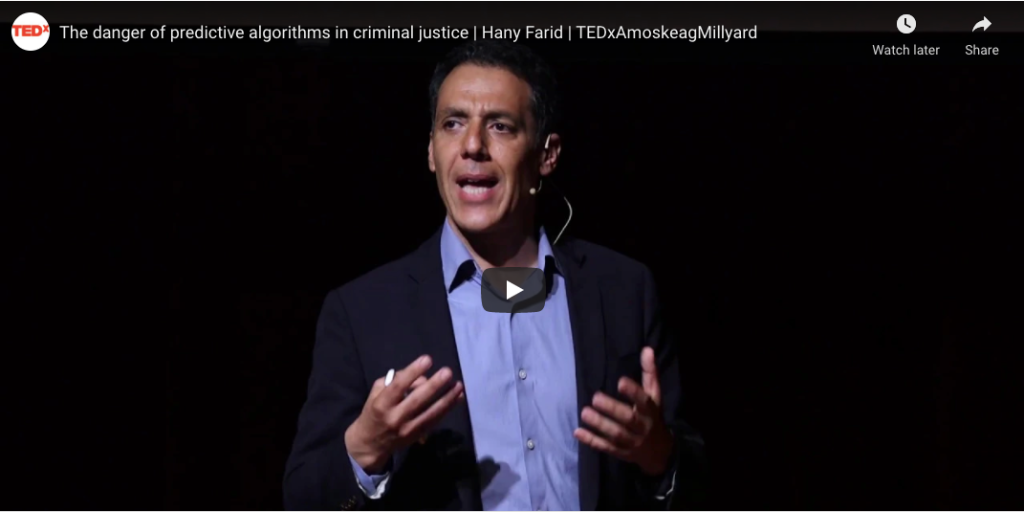
The danger of predictive algorithms in criminal justice
Dartmouth professor Dr. Hany Farid reverse engineers the inherent dangers and potential biases of recommendations engines built to mete out justice in today’s criminal justice system. In this video, he provides an example of how the number of crimes is used as proxy for race.
Read More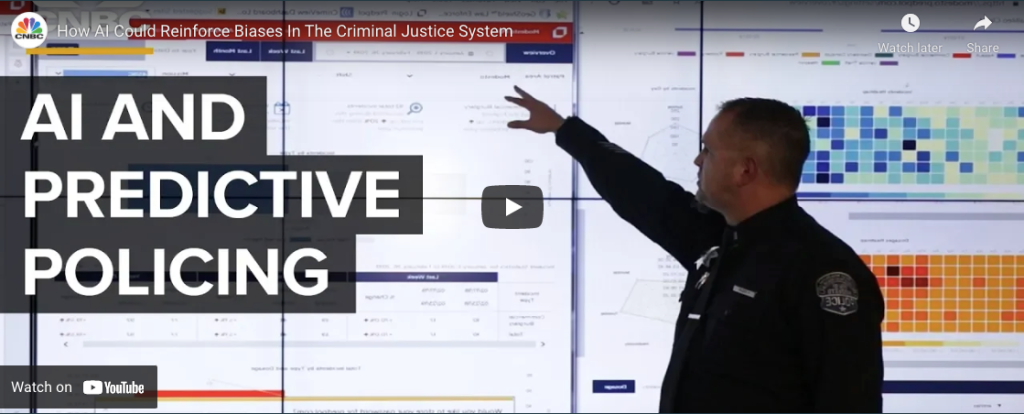
How AI Could Reinforce Biases In The Criminal Justice System
Whilst some believe AI will increase police and sentencing objectivity, others fear it will exacerbate bias. For example, the over-policing of minority communities in the past has generated a disproportionate number of crimes in some areas, which are passed to algorithms, which in turn reinforce over-policing.
Read More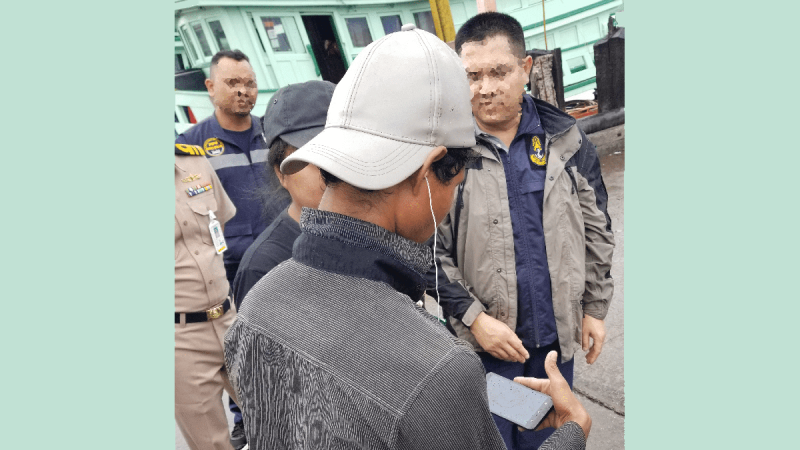
Apprise: Using AI to unmask situations of forced labour and human trafficking
The creators of the Apprise app share how they created a system assist workers in Thailand to avoid vulnerable situations. Forced labour exploiters continually tweak and refine their own practices of exploitation, in response to changing policies and practices of inspections.The article showcases efforts to create AI tools that predict changing patterns of human exploitation. […]
Read More
AI can be sexist and racist — it’s time to make it fair
Computer scientists must identify sources of bias, de-bias training data and develop artificial-intelligence algorithms that are robust to skews in the data. The article raises the challenge of defining fairness when building databases. For example, should the data be representative of the world as it is, or of a world that many would aspire to? […]
Read More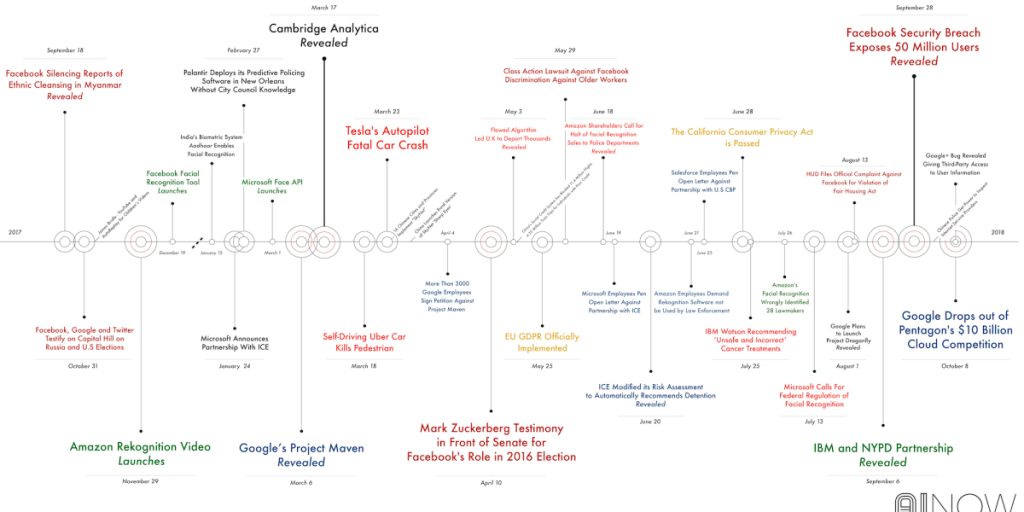
Establishing an AI code of ethics will be harder than people think
Over the past six years, the New York City police department has compiled a massive database containing the names and personal details of at least 17,500 individuals it believes to be involved in criminal gangs. The effort has already been criticized by civil rights activists who say it is inaccurat… The New York police department has […]
Read More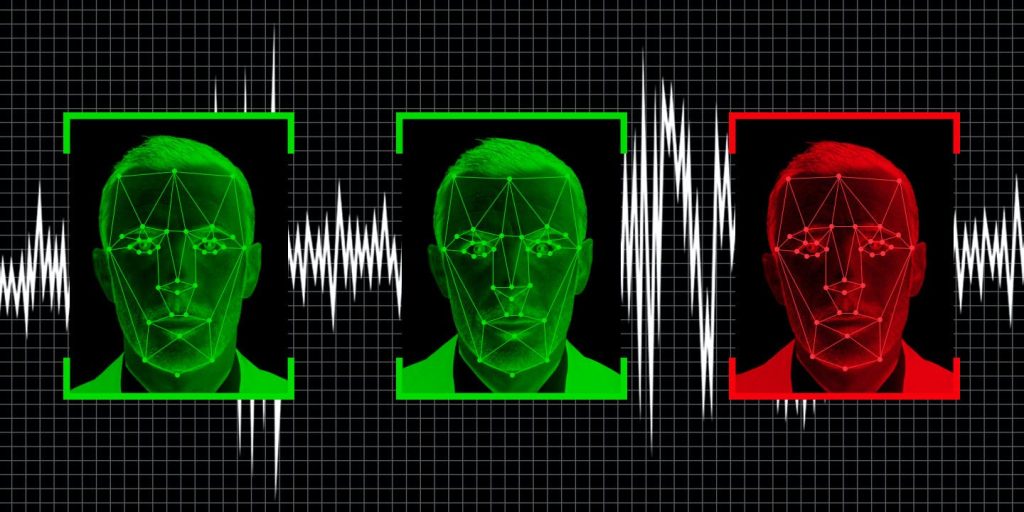
We tested Europe’s new lie detector for travellers – and immediately triggered a false positive
4.5 million euros have been pumped into the virtual policeman project meant to judge the honesty of travelers. An expert calls the technology “not credible.” IBorderCtrl’s lie detection system was developed in England by researchers at Manchester Metropolitan University. It claims that its virtual cop can detect deception by picking on the micro gestures the […]
Read More
The danger of predictive algorithms in criminal justice
A study on the discriminatory impact of algorithms in pre-trial bail decisions.
Read More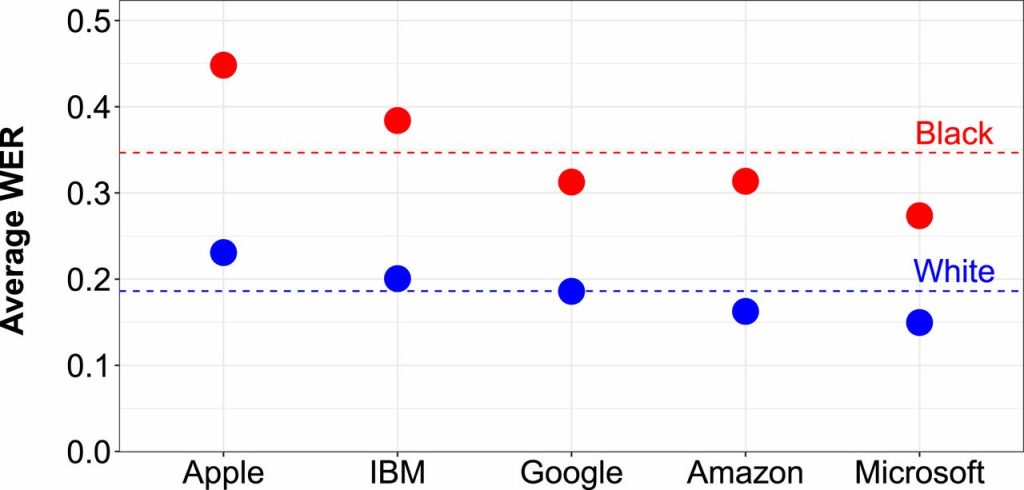
Racial disparities in automated speech recognition
Racial disparities in automated speech recognition Automated speech recognition (ASR) systems are now used in a variety of applications to convert spoken language to text, from virtual assistants, to closed captioning, to hands-free computing. By analyzing a large corpus of sociolinguistic interviews with white and African American speakers, we demo… Analysis of five state-of-the-art automated […]
Read More
Adjudicating by Algorithm, Regulating by Robot
Sophisticated computational techniques, known as machine-learning algorithms, increasingly underpin advances in business practices, from investment banking to product marketing and self-driving cars. Machine learning—the foundation of artificial intelligence—portends vast changes to the private sect… This article highlights the benefits of artificial intelligence in adjudication and making law in terms of improving accuracy, reducing human biases […]
Read More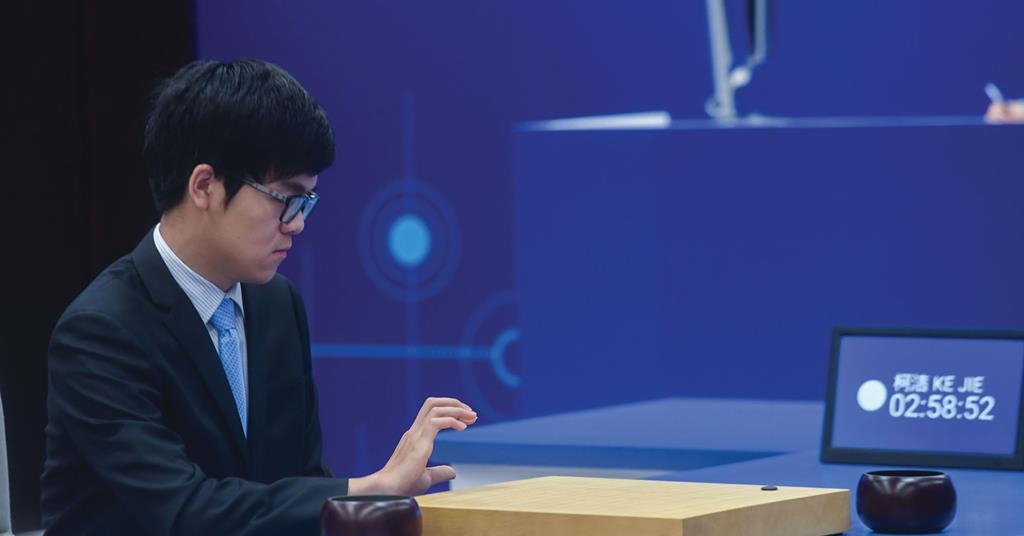
Artificial intelligence in the courtroom
The impact of AI on litigation. The current use of AI in reviewing documents, predicting outcome of cases and predicting success rates for lawyers. This article highlights concerns about fallibility and the need of human oversight.
Read More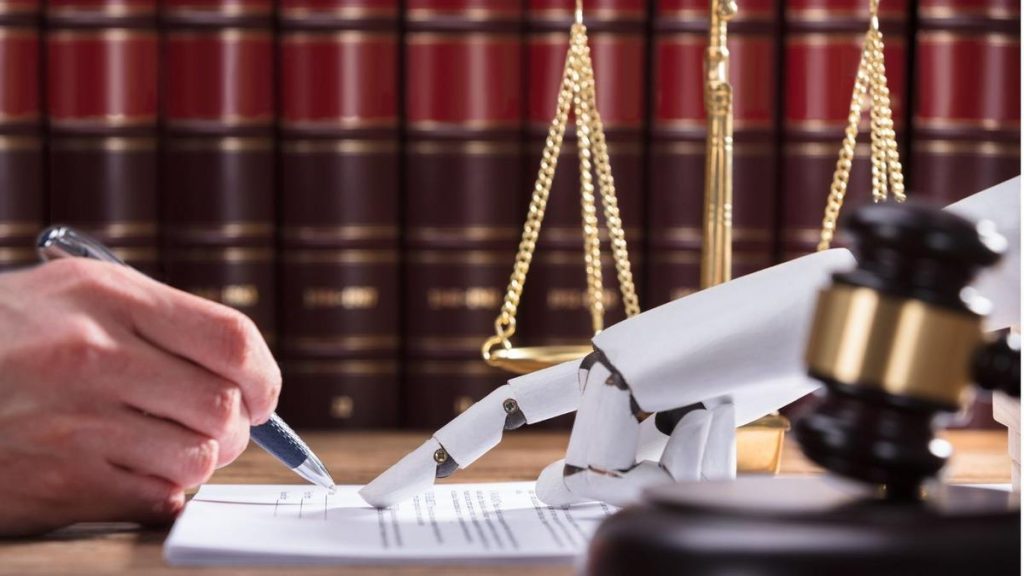
How AI is impacting the UK’s legal sector
We examine the impact of artificial intelligence on the UK’s legal sector
Read More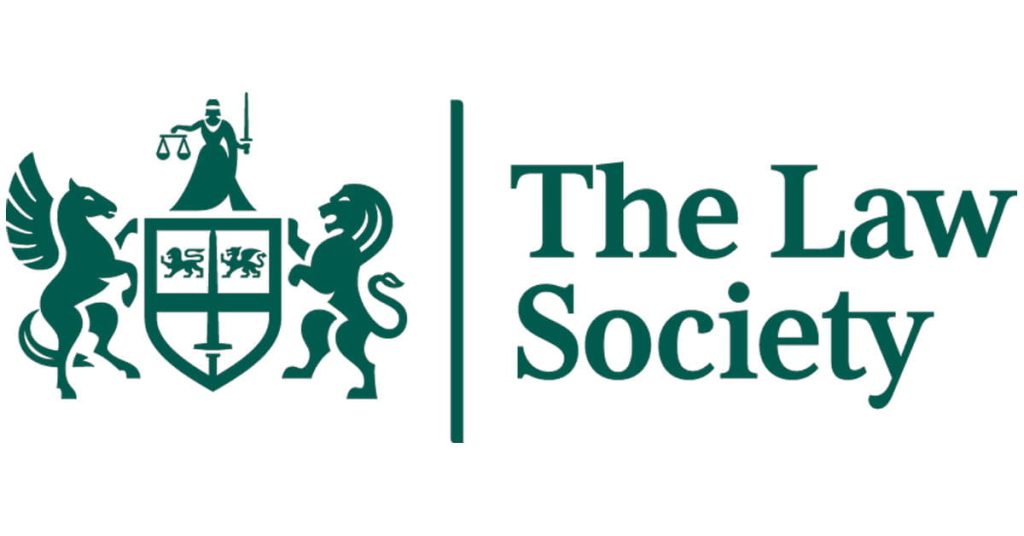
Six ways the legal sector is using AI right now
Law Society partner and equity crowdfunding platfrom Seedrs explains how developments within AI are taking law firms and solicitors to the next level. A article on how AI can be used in adjudication and law in general. It highlights that although AI has vast potential, there is not a broad adoption so far.
Read MoreUnmasking Facial Recognition
Facial recognition is not the next generation of CCTV. Whilst CCTV takes pictures, facial recognition takes measurements. Measurements of the distance between your eyes, the length of your nose, the shape of your face. In this sense, facial recognition is the next generation of fingerprinting. It is a highly intrusive form of surveillance which everyone […]
Read More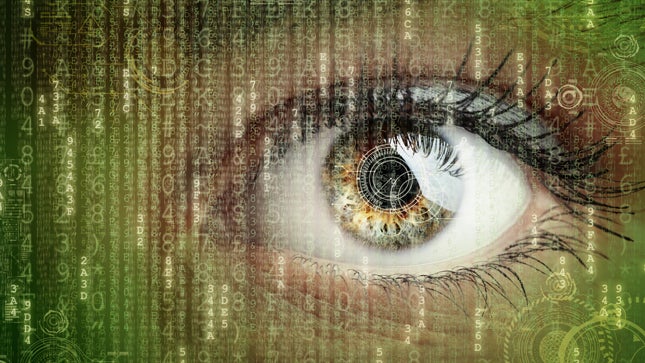
Facial recognition could stop terrorists before they act
In their zeal and earnest desire to protect individual privacy, policymakers run the risk of stifling innovation. The author makes the case that using facial recognition to prevent terrorism is justified as our world is becoming more dangerous every day; hence, policymakers should err on the side of public safety.
Read More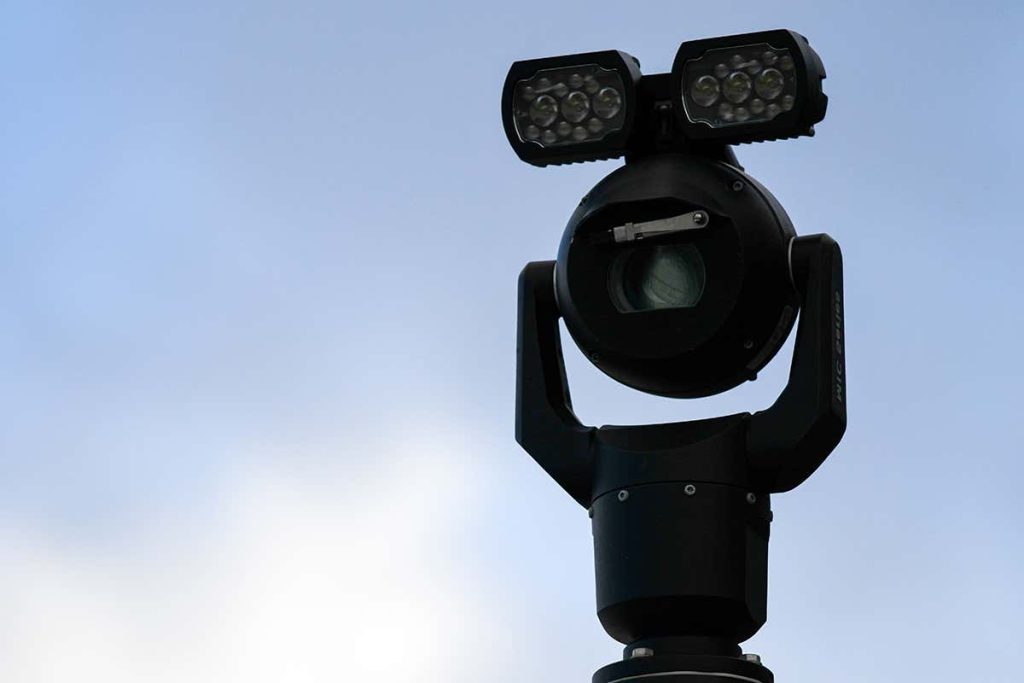
Is police use of face recognition now illegal in the UK?)
The UK Court of Appeal has determined that the use of a face-recognition system by South Wales Police was “unlawful”, which could have ramifications for the widespread use of such technology across the UK. The UK Court of Appeal unanimously decided against a face-recognition system used by South Wales Police.
Read More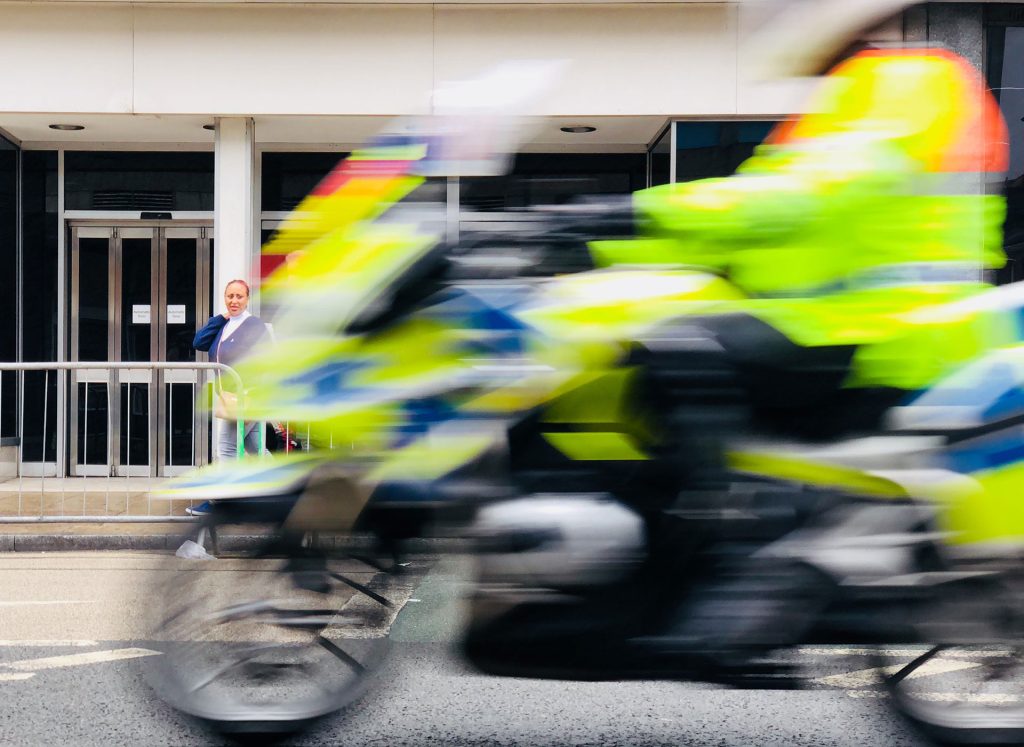
UK police adopting facial recognition, predictive policing without public consultation
UK police forces are largely adopting AI technologies, in particular facial recognition and predictive policing, without public consultation. This article alerts about UK police using facial recognition and predictive policing without conducting public consultations. It also calls for transparency and input from the public about how those technologies are being used.
Read MoreData Analytics and Algorithmic Bias in Policing
Algorithms used for predictive policing rely on datasets which are inherently biased because of historically over- or under-policing certain communities. This results in the amplification of those biases.
Read More
Decision Making in the Age of the Algorithm
A good summary of the differences between predictive analytics – used in AI – and traditional methods, in terms of methods and impact.
Read More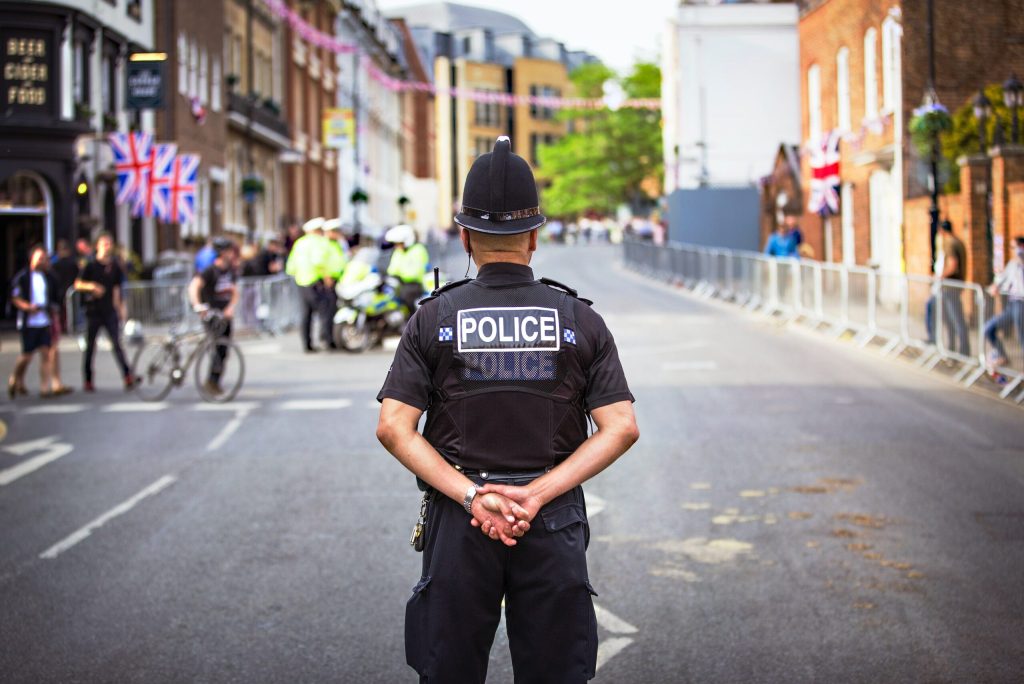
AI in Policing
AI tools are developed with the aim of preventing crime with tools such as computer vision, pattern recognition, and the use of historical data to create crime maps, locations with higher risks of offence.
Read More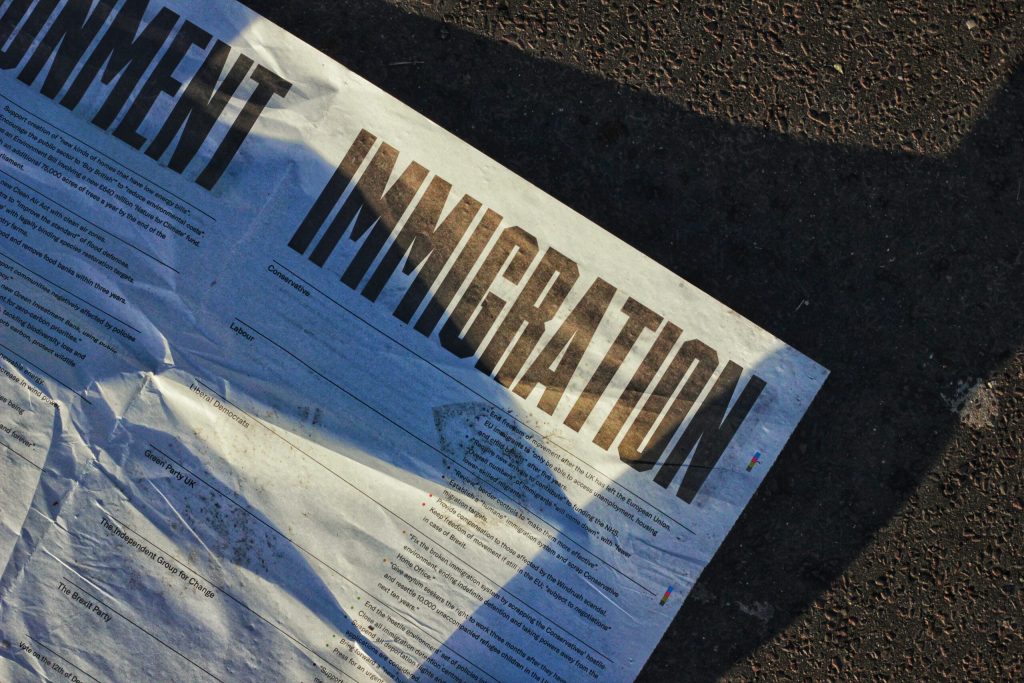
AI in Immigration
AI is used to help with border control as well as analyse immigration and visitor applications. The implementation so far has flagged the encoding of unfair treatment of individual visa applications based on the person’s country of origin.
Read More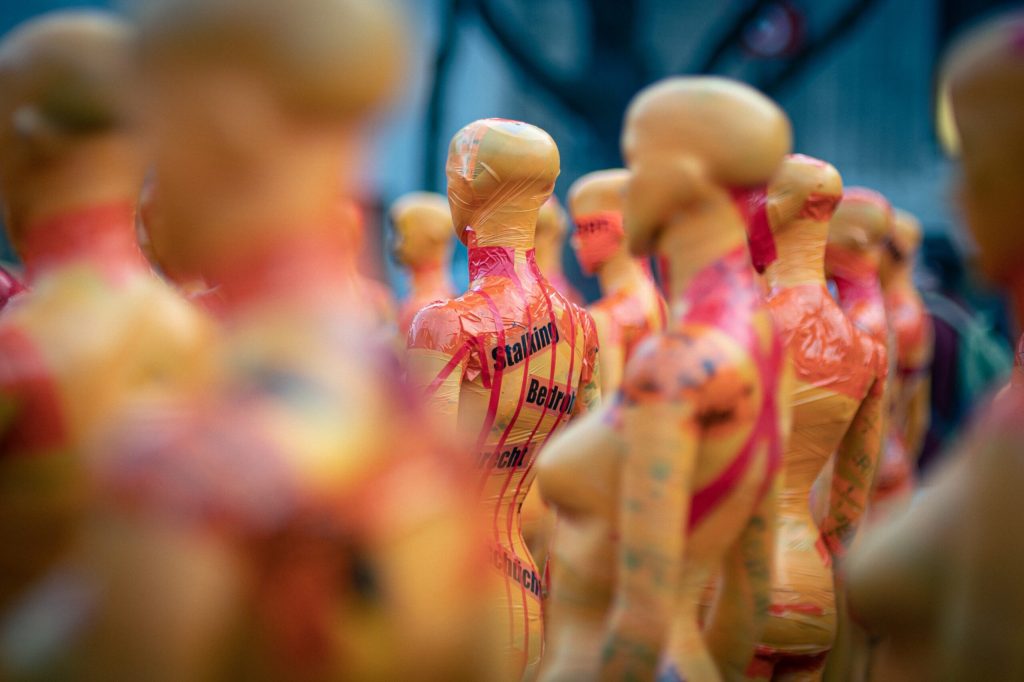
AI in Human Rights
AI tools can be helpful in the fight against human rights issues such as terrorism and human trafficking, but privacy rights are a problem.
Read More
AI Making Legal Judgements
Algorithms become the arbiters of determinations about individuals (e.g. government benefits, granting licenses, pre-sentencing and sentencing, granting parole).
Read More